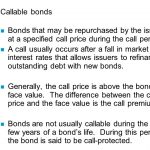Content

So, the chlorine atom will take the sodium’s electron and both atoms are happy. In the case of aluminium iodide an ionic bond with much covalent character is present.
- Alum definitely has ionic bonds, although the lattice structure would be a bit more complex than for NaCl shown above, as there are more elements present in alum.
- Polarity is a measure of the separation of charge in a compound.
- Notice that if the charge of an ion is 1+, the symbol is a superscript plus (+), without the number 1 (e.g., Na+).
- You’re likely to come across the term ionic bond in chemistry class.
We’ve created a new place where questions are at the center of learning. Britannica Explains In these videos, Britannica explains a variety of topics and answers frequently asked questions. Demystified Videos In Demystified, Britannica has all the answers to your burning questions.
Words Starting With I and Ending
To name a Ionic bond dictionary definition ion, or anion, the last part of the name of the atom is dropped and replaced with -ide. Thus there are chloride ions (Cl-), fluoride (F-) ions, sulfide (S2-) ions, and nitride (N3-) ions. Notice that if the charge of an ion is 1–, the symbol is a superscript minus (-), without the number 1 (e.g., Cl-). The content in this topic will work towards building an understanding of how atoms form ions and ions bond to form ionic compounds. Also, be aware there are many exceptions to these guidelines. Many times the electronegativity difference between a metal and nonmetal is around 1.5, yet the bond is ionic.

There is an ionic bond because of the force of attraction between positively and negatively charged ions in the compound. We say that NaCl is an ionic compound, but note that we don’t write the + and – in the formula (not Na+Cl-). Ionic bonds are one of the two main types of chemical bonds.
Water Cycle
Most ionic compounds tend to dissociate in polar solvents because they are often polar. This phenomenon is due to the opposite charges on each ion. Metals are electropositive and tend to lose electrons, whereas nonmetals are electronegative and tend to gain electrons. A metal atom loses one or more electrons to form a cation with an octet. The same number of electrons are accepted by the appropriate number of atoms of a nonmetal to form an octet in the anion, producing an ionic compound.
In comparison, Group 1 https://personal-accounting.org/s (1+) combine with Group 16 anions (2–) in a two-to-one ratio. So, there are two lithium cations for every oxygen anion when they bond to form lithium oxide .
